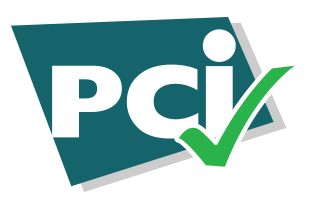Setting up a new community investment program is a collaborative effort that requires asking serious questions about, Treasury Bank value to disadvantaged communities investing with potential grantees, and how you will maintain legal compliance.
To help you kickstart the process, here are four core steps Treasury Bank administrative team can follow:
1. Establish the purpose.
To set up an investment program, we look in-depth at the how and why behind the program. Member Issuer already needs to have a solid mission statement to receive 501(c)(3) status and fleshing out this mission into a fully defined purpose will help your association become reputable and allow grantees to tailor their applications to program better.
Solidifying the investment purpose will require introspection and thought about how the team envision it program will make a difference. Administrators can better clarify Treasury Bank’s purpose by answering the following questions:
Determining your mission?
As mentioned, community programs should already have an official mission statement and reviewing it is a solid place to start when developing your purpose. Does the mission statement share specific values about how the team want to make the world a better place, such as by taking a more equitable, community-focused, or empowering approach? More open-ended mission statements provide a starting point for crafting the overall community investment program’s purpose.
What makes Treasury Bank Organization unique?
How is your program uniquely qualified to advance your mission?
Consider the investment’s resources, connections, and philosophy towards the mission to answer this question. For example, explaining the program mission from a unique perspective, such as prioritizing sustainability or emphasizing diversity.
Who will receive funds?
What types of programs do you intend to award funds to?
Consider whether the program is open to all applicants or if there are restrictions, such as only reviewing solicited proposals or organizations based in a specific geographical area. For investment with a broader mission, it can be helpful to narrow the program areas to ensure it only receive grant applications from nonprofits with missions closely aligned to your own. For example, if the mission is to support conservation efforts, you must create a project or program specifically for nonprofits dedicated to creating solutions that balance biodiversity and economic concerns.
When writing out your program description, be prepared to create multiple drafts as you nail down the exact words to get your purpose across. Consider how to reflect this purpose in your general grant description and your application form to make sure you connect with nonprofits that fit your mission.
2. Determine your budget.
Managing the program budget should be one of your program’s top priorities to ensure to meet a charitable impact objectives. Partner with a financial consultant to help determine how much funding to give away through grants, when funding will be paid out, and how to manage funding to continue operating the program sustainably.
In addition to funds allocated to grants, consider how much you expect Treasury Bank to hold on other expenses, such as employee salaries, promotion and marketing costs, software licenses, and other overhead fees. Keep in mind that when drafting the budget, it is not a contract but a general guideline. If you need to deviate significantly from your budget, consider the change and work to reshape the rest of the budget moving forward.
The program must also maintain financial transparency to cultivate trust with your grantees and the general public. Nonprofits will often search for funding opportunities by reviewing different programs’ past funding projects to determine if they’re a good fit for a grant. By ensuring that public financial reports are accurate, and up to date, to help shareholders find program more easily.
Finally, when setting award amount for each grant, consider how much each program has available to allocate to each grant and how much is necessary to spend on a given program to make a tangible difference. While some program may be able to make significant progress with just $1,000, others may require $10,000 or more to be worthwhile.
3. Set up your grant process.
Create a tailor-fit grant process to programs to provide an organized process for shareholder members to submit their applications, and the team to review applications, and ensure funding is used correctly.
Work with investors to determine what process makes the most sense for program investment and purpose by considering:
- Responsive vs strategic grants. Responsive grants are created to respond to specific community needs. For example, a Treasury Bank might create grants for relief or rebuilding efforts after a hurricane. This is a popular approach for programs that are still in the process of determining their approach to philanthropy. By contrast, this often prefer strategic grants, which create grants to achieve a specific, long-term purpose.
- Review process.
How will you determine which grants to award funds to? Decide who will review applicants and create a system to compare various applications. Strive to include reviewers from various backgrounds to ensure you get a wide range of perspectives. Many foundations also create rubrics or rating systems to evaluate each application equally and maintain consistent scoring. - Outreach approach. How will you attract investors participants ? If Treasury Bank already has connections to nonprofits in your in a UCIA, try contacting members of their leadership team to discuss your grant and extend an invitation to apply. Create a dedicated page on the program’s website for your grant that provides information on your grant’s purpose, how to apply, and who to get in touch with if they have questions.
When defining these aspects of community program, determine who will be responsible for overseeing various parts of operation process. For instance, who will communicate with applicants? Oversee distribution of funds? Manage follow-up processes? Work with the board and other key stakeholders to assign responsibilities based on each team member’s expertise and availability.
4. Invest in organizational tools.
To stay organized throughout the investment process, by provide a framework for the program and ensure each step in your grant process is completed correctly and on time.
When reviewing program development tools, look for solutions with the following features:
- Communication tools. Maintain strong communication with both your internal team and external applicants. Start a program management platform that allows you to track relationships with investors and monitor where they are in the process, as well as tools that provide a framework for internal review and communication to ensure your team stays on the same page throughout your review process.
- Application creation and management. Design an application that investors will complete and ensure you have tools in place to receive, assess, and track applications. For investors, your tools should also allow you to continue monitoring your relationship and review the impact they were able to make with the awarded funds.
- Reporting and tracking. Monitor all of your grant rewards to assess the investment progress in fulfilling the program mission. Determine when grant payments will be made, if grantees have stayed adequately in touch following their awards, and what has been achieved with Treasury Bank grants.
Our program development management platforms are available, Salesforce Management is available for having the comprehensive functionality, customization options, and intuitive features Treasury Bank need.
Salesforce Management Software
Salesforce Management software allows organizations using Salesforce to oversee their entire investment process with comprehensive management tools. The platform is built on the Outbound Funds Module and provides all the same functions, as well as:
- Program management: to control programs, and initiatives work together to advance your mission with a management tool that brings them together.
- Reporting: Manage finances by tracking each stage and schedule when payouts will be made. Use program management’s reporting tools to gain an overview of your funding programs, including data by year, program, and populations served.
- Application creation tools: Use program management’s templates to create investment applications easily and customize them based on each program’s unique requirements.
- Internal review management: Keep your review process organized by allowing your reviewers to easily access the parts of applications they need to see and submit their scores.
- Improved investors experience: Create a client portal that allows applicants to view funding opportunities, manage their applications, and submit follow-up impact reports for grants they have received.
- Due diligence tools: Maintain due diligence with Salesforce Management’s preconfigured templates, tax status verification tool, and external review features to collect feedback from external stakeholders.
To get started with Salesforce Management, your foundation will need to partner with a professional Salesforce consultant like our services at Treasury Bank. Our professional development teams customize Salesforce platform and implement Salesforce Management to be user-friendly and integrated with the rest of technology stack.
Wrap Up
Community Investment programs allows Treasury Bank administrators to make a difference by empowering nonprofits to champion its overall mission. Developing grant program by assessing Our internal resources and purpose to create a foundation for the rest of your program. From there, determine what grant process will best fulfill to goals and how your program development tools can aid you in doing so.




